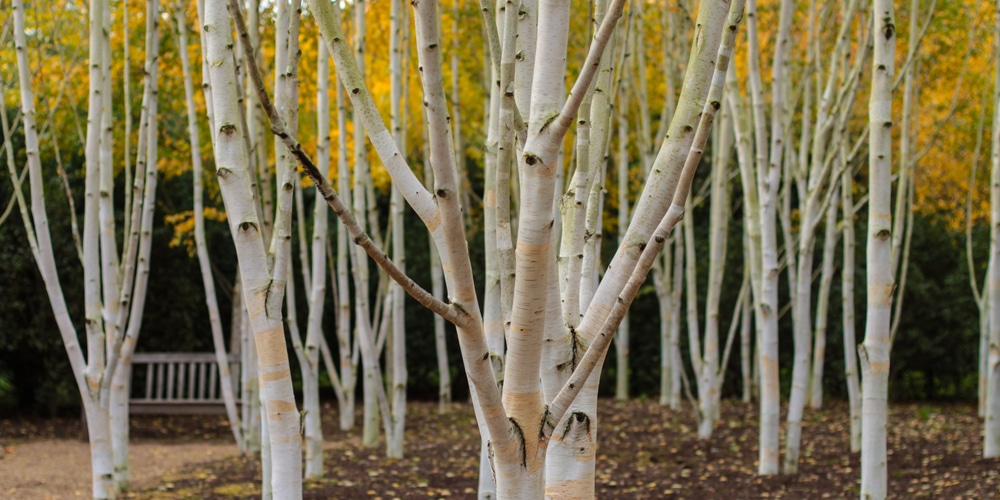Birch trees grow tall and stately, with striped bark and refreshing foliage that suits any landscape. Pruning is one of the things you can do to make your tree look more beautiful. If you’re curious as to whether you should prune birch trees or not, then the answer is a definite yes.
Trimming is necessary, and you should know when to cut as well as how to prune a birch tree.
When Should You Prune a Birch Tree?
The timing of pruning a birch tree is different from conventional knowledge. While other tree species respond best with an early spring pruning, Birch Trees are averse to it.
A birch tree will bleed sap if you prune in early spring, which may be detrimental to its health. Also, cutting unwanted branches and side shoots during the season will make it susceptible to pests and diseases, such as the deadly birch tree borers and other insects that lay eggs on open tree wounds.
That said, the best time to prune birch trees is late in the summer or in early fall. The sap that comes out during these seasons will be minimal, and you’ll avoid the egg-laying season and reduce the risk of your tree getting infected.
Age-wise, you can start pruning as early as several years in the birch tree’s life while the branches and top areas are still accessible. Also, you can do crown cleaning any time during the year when you want to remove dead or diseased branches.
Pruning helps birch trees grow better and prevents plant diseases. Moreover, it adds to the aesthetic appeal in your yard and allows the tree to age gracefully over time. Don’t put off pruning your birch tree as it pays dividends in terms of overall plant health and bringing natural beauty in your landscape.
How to Prune Birch Trees
There are several different ways to prune a birch tree. Most gardeners won’t even think about pruning their tree until it’s years old and has grown to a considerable height. It’s recommended that you start cutting and shaping as early as three years after planting.
Cutting down the main trunk to reduce the tree’s height should not be done unless absolutely necessary. More often than not, pruning will be part of maintenance, e.g., removing dead branches and low-lying ones to improve shade use so people can get under the tree comfortably.
Furthermore, pruning helps maintain an attractive shape and removes branches that are too close together or rubbing against each other.
For crown thinning you don’t have to follow a strict guideline. Just locate and remove weak branches along with those that exhibit sparse growth to make way for the stronger limbs.
For larger branches, you can do the ‘three cuts’ technique to minimize damaging the tree. Crown cleaning is similar- you find dead tree branches as well as crossing branches and remove them to allow adequate air and sunlight to pass through the canopy.
The general rule is to be as conservative as possible when pruning the first few times. Then, a year or two later you can take out more. You can shorten a branch or twig by removing the tip up to a side branch, or stopping when you see an outward-facing bud.
While pruning, you should also take the time to remove suckers and side shoots. These tend to draw energy away from the main trunk and branches. You can tear them off pretty easily by hand, but a pair of pruning shears will work here as well.
As a general rule, you shouldn’t remove more than 20 percent of a young birch tree. Selective pruning works best in this regard- if a branch looks healthy and it’s not really getting in the way, then it’s best to just leave it alone. You can wait until the end of the next growing season to shape it the way you want.
Prune birch trees: Conclusion
Remember, less is better when it comes to pruning birch trees. To make it more manageable, you should start light pruning during the tree’s early years, then schedule it every growing season.
Trim off dead or diseased branches the moment you spot them to keep your tree healthy.
Related Article: 12 Trees with White Bark

